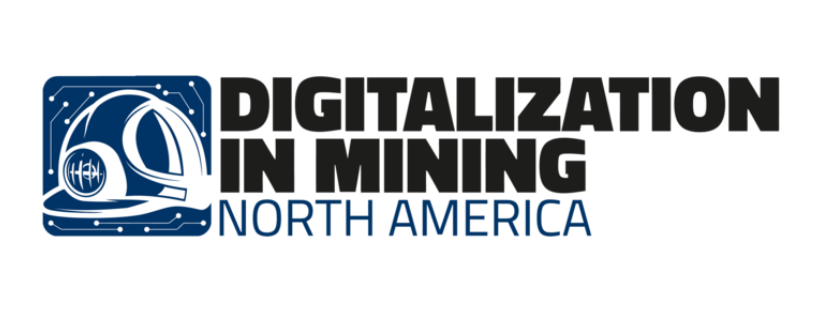By Bill Gough, Mining Industry Application SME at Imubit
By Manuel Lopez, Mining Industry Account Executive at Imubit
The conversations in Vancouver confirmed that the mining sector is ready for the move from experimental pilots to enterprise‑scale digital programs. Below are five themes that stood out at the event, and why they matter for any operator looking to turn data into throughput.
Capital Goes Where the Payback is Clear
Executives no longer debate whether AI has potential; they debate whether a given project earns its keep. One panellist from RUA Gold was refreshingly candid: a US $250 k annual AI budget is “about the cost of two drill holes.” The potential value of AI to improve the hit rate in exploration and drilling rapidly overshadows the investment risk, so long as the technology delivers. For majors that move hundreds of millions of tonnes, fractional efficiency gains justify larger investments. For mid‑tiers and juniors, the bar is higher—use cases must translate directly to ounces produced or dollars saved within the fiscal year. If a technology can provide an increased hit rate for drilling campaigns, it can overcome the hurdle rate in gold producers of any size.
Cybersecurity Will Always be Gatekeeper
Technical debt and fragmented governance continue to stall promising pilots. Conference polling suggested that 40–60 % of AI projects die on the desk of the security team before they ever reach production. The lesson: involve cybersecurity leadership early, quantify cyber‑risk reduction alongside operational upside, and choose IT leadership that’s not change-averse, but rather ready to take the calculated risks required for enterprise transformation. Kalev Ruberg, recently retired from a 17-year stint as CIO at Teck Resources, provided a great perspective on balancing risk and innovation. Teck embarked on a multi-year initiative (dubbed Race21™, and well-known amongst a diverse event audience) to become the most digitally innovative mining company. Multiple employees from their innovation and technology group (born from the Race21™ program) attended this year’s event being just a stone’s throw from their Vancouver HQ.
Digital Twins Are Maturing—But Only with a Roadmap
KPMG’s presentation quickly shook the audience’s pre-conceived notions of digital twins with a nostalgic reference to SimCity—a fan favorite digital twin! They laid out a practical framework for thinking about the objectives and value of a digital twin project.
- Give visibility into the data
- Help predict the future based on what’s happened in the past
- Provide levers, and they’re pulled, show the impact on my business
Case studies demonstrated that the real unlock comes when models can act on their own insights, not just visualise them. ExxonMobil’s “SafetyPal”—a retrieval‑augmented LLM that serves more than 3,000 field users—illustrates that getting to action and impact is possible today when domain data, governance, and change management line up.
Return‑on‑Investment Discipline Beats “Moon‑Shot” Mentality
The Mosaic Company harkened on the need to start with the problem. The AI programs they’ve seen fail were those that rolled out a large-scale solution and then looked for a problem. This approach fails with front-line stakeholders because they don’t feel heard early enough in the solution decision process. Mosaic has found that short, problem‑focused pilots build credibility faster than multi‑million‑dollar initiatives. They then ride the momentum of these wins to justify going after the bigger problems.
Talent Translators Are the Scarce Resource
Technology alone will not overcome talent shortages in domain areas like geology, metallurgy, and data science. Speakers urged companies to cultivate “translator” roles—professionals who pair domain intuition with analytics fluency and can move seamlessly between the mine, the control room, and the boardroom. Recruiting for curiosity and systems thinking, not just traditional mining experience and credentials, emerged as a consistent theme. Without that human interface, even the best technology-based solutions will struggle to earn trust on site.
The Opportunity for Closed Loop AI Optimization (AIO)
Imubit’s experience delivering AI-powered process optimization solutions in the process industries aligns closely with the gaps highlighted in Vancouver:
- Outcome‑first design: Projects begin with a problem. Economic baselines and target ROI metrics are structured for time to value in months (not years), echoing the ROI discipline Mosaic champions.
- Secure, explainable models: Operator‑friendly UX for explainability builds trust, and integration with existing controls infrastructure, mitigate many of the risk concerns of IT leadership.
- Out-of-the-box digital twin maturity: Imubit’s approach to process optimization follows KPMG’s roadmap. Imubit models gain visibility into what’s happening in the process–what’s measured and what’s not, they predict what will happen next, then leverage knowledge and experience acquired through reinforcement learning to pull the relevant levers to drive to the best possible outcome.
From Conversation to Launching your AI Journey
The “north star” of autonomous process optimization in mining is no longer approaching on the horizon but it is within grasp, and early adopters are starting to reap the benefits. Those who act fast, ensuring the right internal and external support and organizational change management strategies are a step ahead in solidifying their long-term competitive advantage.
For organizations exploring how AI can add value to the business, starting with something with direct operational impact and operator interaction makes a lot of sense. Build buy-in by bringing operations along on the AI modeling journey that will lift throughput, lower energy intensity, or tighten ESG metrics.
Imubit’s mining industry practice is excited to explore your toughest challenges together. Kick off the journey to tangible business outcomes with a complimentary AIO Assessment.




